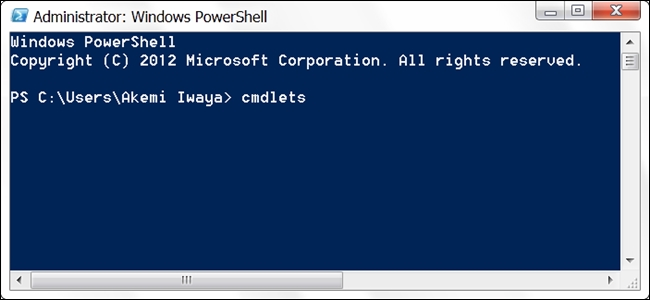When working with Windows PowerShell, you may have come across the term cmdlet and found yourself somewhat confused. Is a cmdlet something totally different from a command or is it just the PowerShell name for them? Today's SuperUser Q&A post has the answer to a curious reader's question.
Today’s Question & Answer session comes to us courtesy of SuperUser—a subdivision of Stack Exchange, a community-driven grouping of Q&A web sites.
The Question
SuperUser reader RBT wants to know why Windows PowerShell commands are called cmdlets:
I have been trying to figure out the nomenclature for why commands are called command-lets (cmdlets) in PowerShell. Why they are not simply called commands instead? What is the difference?
I could only guess based on this Wikipedia article about PowerShell that it might somehow be an abbreviation of the command line interface to interact with commands written in .Net.
Why are Windows PowerShell commands called cmdlets?
The Answer
SuperUser contributor LotPings has the answer for us:
According to Microsoft:
A cmdlet is a lightweight command that is used in the Windows PowerShell environment. The Windows PowerShell runtime invokes these cmdlets within the context of automation scripts that are provided at the command line. The Windows PowerShell runtime also invokes them programmatically through Windows PowerShell APIs.
How Cmdlets Differ from Commands
Cmdlets differ from commands in other command-shell environments in the following ways:
- Cmdlets are instances of .NET Framework classes; they are not stand-alone executables.
- Cmdlets can be created from as few as a dozen lines of code.
- Cmdlets do not generally do their own parsing, error presentation, or output formatting. Parsing, error presentation, and output formatting are handled by the Windows PowerShell runtime.
- Cmdlets process input objects from the pipeline rather than from streams of text, and cmdlets typically deliver objects as output to the pipeline.
- Cmdlets are record-oriented because they process a single object at a time.
Source: Cmdlet Overview [Microsoft]
Have something to add to the explanation? Sound off in the comments. Want to read more answers from other tech-savvy Stack Exchange users? Check out the full discussion thread here.

